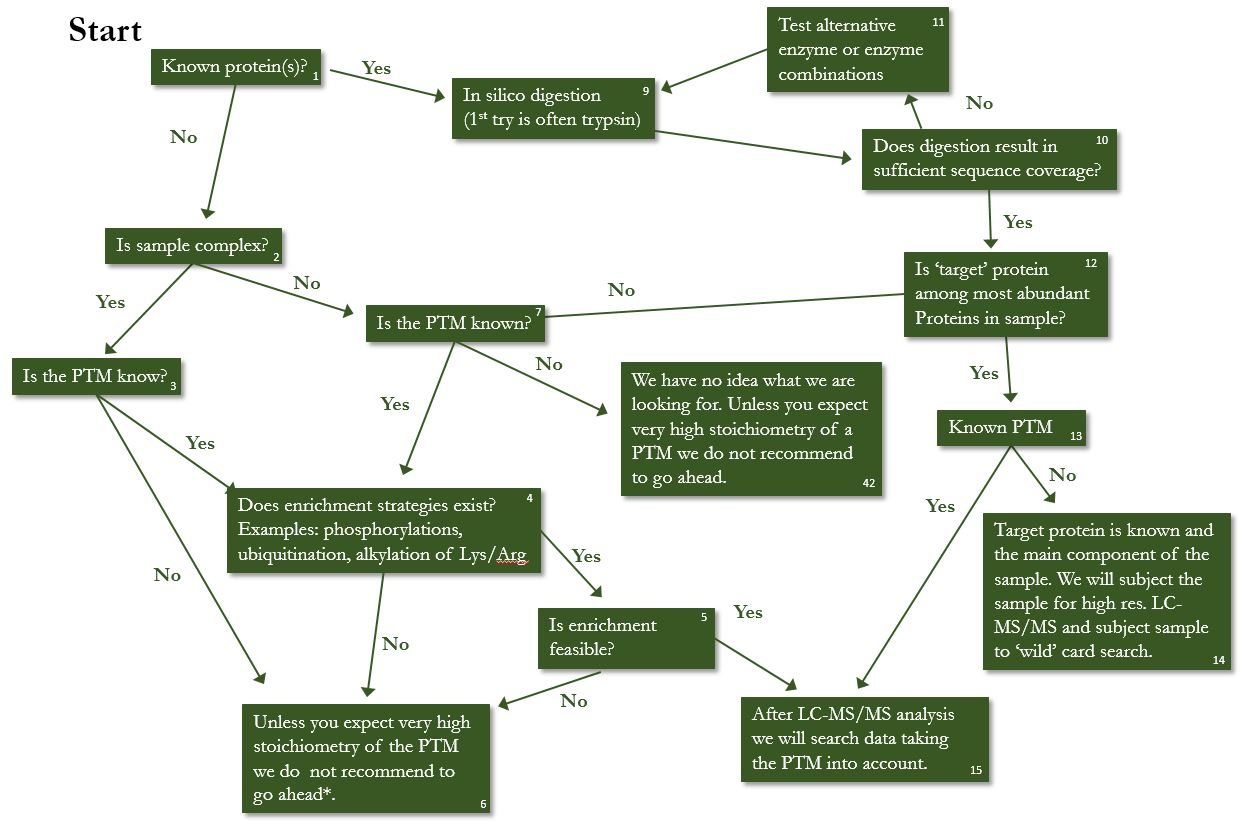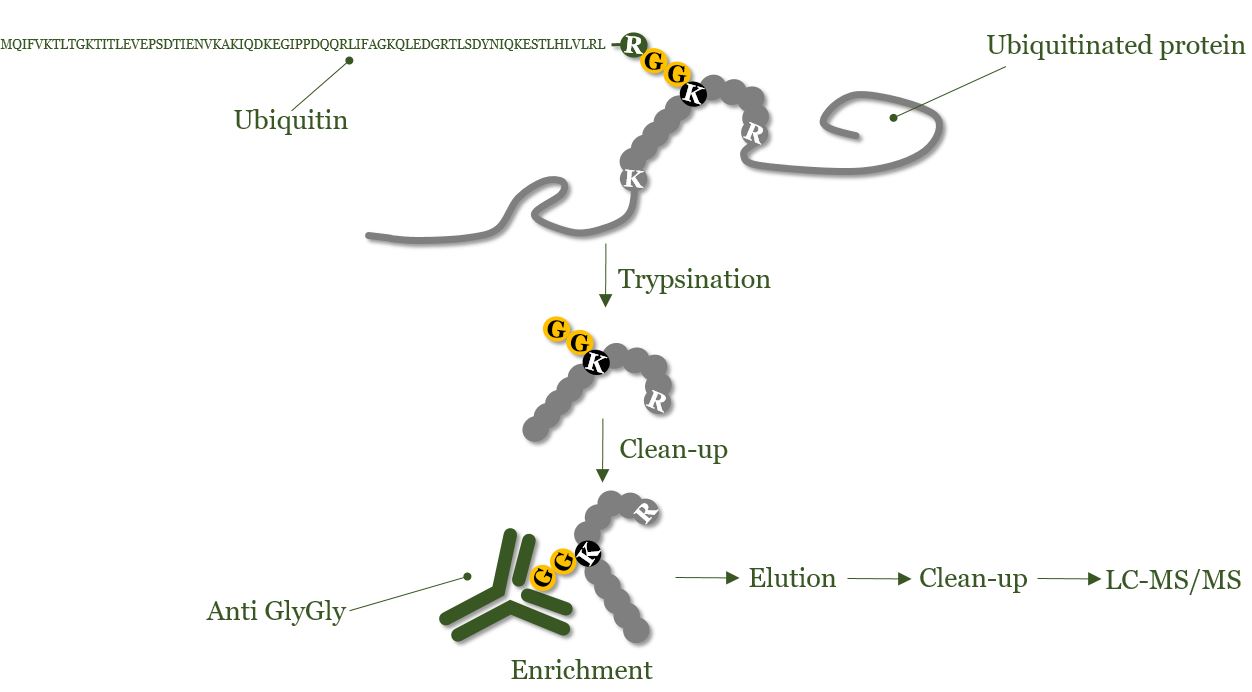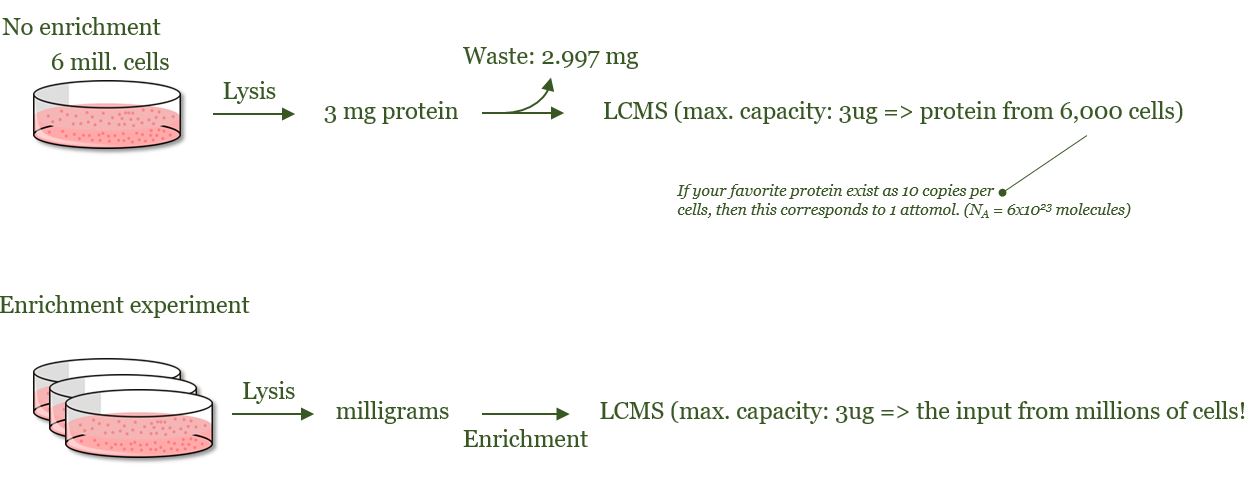Post Translational Modification
Analysis and identification of Post Translational Modification (or PTMs) is one of the strongest forces of mass spectromtery. However, it can also be one of the most tricky ones to analyses….. Identification rate (by LC-MS/MS) of Post Translational Modification phosphopeptides can be dramatically increased using enrichment strategies. In the PRC we currently utilize IMAC and titanium dioxide – based phosphopeptide enrichment. Both strategies are based on interaction of phosphorus-coordinated oxo groups with metal atoms (Fe and Ti). It is not always required or possible to apply enrichment strategies and the decision chart below helps to decide whether enrichment should be used or not.
Sorry. we are still working to add information to this page. Phosphorylation is a is
Phosphorylation is a posttranslational modification. Identification rate (by LC-MS/MS) of phosphopeptides can be dramatically increased using enrichment strategies. In the PRC we currently utilize IMAC and titanium dioxide – based phosphopeptide enrichment. Both strategies are based on interaction of phosphorus-coordinated oxo groups with metal atoms (Fe and Ti). It is not always required or possible to apply enrichment strategies and the decision chart below helps to decide whether enrichment should be used or not.

Typical workflow for PTM analysis by LC-MS/MS

Ubiquitin modification analysis by LCMS

Enrichment allows to focus on what matters.